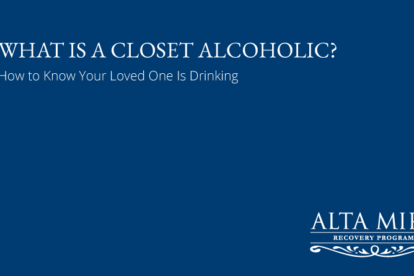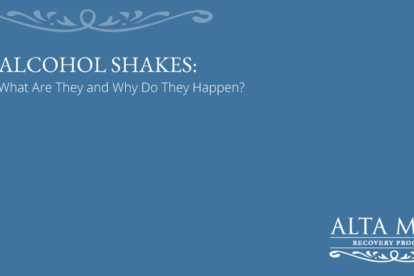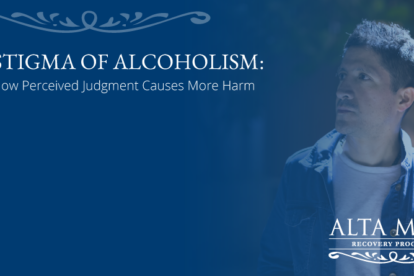A Comprehensive Approach: Integrating Naltrexone in Alcohol Addiction Treatment

In recent years, there has been a profound shift in public consciousness regarding alcoholism. Whereas once it was primarily regarded as a problem of individual character and moral failing, growing awareness of addiction as a medical illness has begun to destigmatize alcoholism and change the way we talk about the condition. This increased understanding is spurred in part by advances within the field of neuroscience, which have allowed researchers to observe how addiction affects brain circuitry and, in 2011, led the American Society of Addiction Medicine to redefine addiction as a chronic brain disorder. While the American Medical Association has recognized alcoholism as a disease since 1956, the updated ASAM classification offers a more precise description of the mechanisms of addiction. Dr. Raju Hajela, who chaired the ASAM committee on the new definition, says, “The disease creates distortions in thinking, feelings and perceptions. […] Simply put, addiction is not a choice. Addictive behaviors are a manifestation of the disease, not the cause.” Dr. Michael Miller, former president of the ASAM, adds, “We have to stop moralizing, blaming, controlling or smirking at the person with the disease of addiction, and start creating opportunities for individuals and families to get help.”
Getting that help, however, is often challenging. Despite the knowledge that alcoholism is a medical condition, many rehabs continue to take a decidedly non-medical approach to alcohol addition treatment. David Scheff, who watched his son Nic struggle with addiction for years, describes the disturbing disconnect between how addiction is purported to be understood and how it is treated in practice:
There’s a whole treatment system that built up over the years based on this model that people need to be chastised. Nic was in programs where he would break a rule—not going to enough meetings or not cleaning up the dishes well enough. He’d have to get a toothbrush and go to the floor of the bathroom and clean the grout. If you’re sick, it doesn’t make sense.
Part of the problem is that a large proportion of alcohol addiction treatment programs in the United States were never designed with medical capabilities in mind, relying instead on addiction counselors whose primary qualification is often being in recovery themselves. As Scheff writes, “In many states, anyone can open a rehab program — no licenses or accreditation are required.” The fact that addiction treatment programs are not required to have medical professionals on staff inherently prevents the implementation of a medical treatment model. More alarmingly, however, many programs with dedicated medical staff also refuse to follow science-based treatment protocols due to outdated understandings of best practices and philosophical resistance to pharmacological intervention. As a result, many alcoholics are never given the opportunity to access one of the most promising treatments currently available for alcohol addiction treatment: naltrexone.
Naltrexone As Pharmacological Extinction
Dr. John David Sinclair was a pioneer. An American-born scientist, he relocated to Finland in the 1970s to devote himself to the study of alcohol addiction and discover more effective ways of treating the disorder according to solid scientific principles, driven by an understanding of alcoholism as a brain disease. “Sinclair came to believe that people develop drinking problems through a chemical process: Each time they drink, the endorphins released in the brain strengthen certain synapses.” If the strengthening of these synapses is what creates the overwhelming drive toward addictive behavior, preventing the fortification process from occurring could disrupt alcohol addiction on a neurological level and act as an extinction method.
Sinclair theorized that if you could stop the endorphins from reaching their target, the brain’s opiate receptors, you could gradually weaken the synapses, and the cravings would subside. To test this hypothesis, he administered opioid antagonists—drugs that block opiate receptors—to the specially bred alcohol-loving rats. He found that if the rats took the medication each time they were given alcohol, they gradually drank less and less.
Based on his research on rat populations, he began studying the effects of the opioid antagonist naltrexone on alcohol consumption amongst patients in alcohol addiction treatment. The results were remarkable; when people with alcohol-use disorder were given naltrexone, 78% of patients were able to decrease their alcohol consumption to safe levels and many were able to stop drinking altogether. Unlike alcohol-deterrent medications like Antabuse, which works by altering the body’s metabolic response to alcohol to induce unpleasant physical effects, naltrexone directly targets the powerhouse of addiction—the brain—to reduce the desire to drink with minimal side effects, leading to greater adherence and significantly higher success rates. By the time Sinclair passed last spring, the naltrexone extinction method was the mainstay of alcohol addiction treatment in clinics across Finland, and is increasingly becoming used across Europe.
Contradiction and Confusion with the Recovery Community
Naltrexone gained FDA approval for the treatment of alcohol-use disorder in 1994. Despite over 20 years of availability in the United States, less than 1% of alcoholics are prescribed naltrexone as part of their addiction treatment. The reasons for this are twofold: rehabs often don’t have the ability to prescribe medications due to a lack of medical staff, and resistance to treating addiction as a disease persists even within the medical community. Scheff points out that, “Even psychiatrists and psychologists wrestle with [understanding addiction as a disease]. A lot don’t get it; they just don’t buy it.” Compounding the problem is the fact that even clinicians who do ostensibly recognize alcohol addiction as a disease are often reluctant to provide pharmacological interventions aimed at treating the addiction, largely due to pervasive and powerful anti-drug sentiment in both medical and recovery communities. For some, even the use of psychotropics for the treatment of co-occurring mental health disorders is frowned upon, as no distinction is made between harmful and therapeutic drug use.
Dr. Markus Heilig, clinical director of the National Institute on Alcohol Abuse and Alcoholism says he was trained to believe that treating alcohol addiction with drugs was antithetical to recovery. “When I went to medical school, if you suggested targeting alcoholism with a drug, people would say to you, ‘Young man, how could you ever hope to treat a chemical dependence with another chemical?’” According to Gabrielle Glaser, the aversion to pharmacological intervention is partially a reaction against unsavory addiction treatment practices in the past. “When doctors were trying to get people away from their alcohol addiction in the 1950s and ’60s, they were also prescribing Valium. So many people would become addicted to both Valium and alcohol,” she says. “[Naltrexone] is a completely different drug. It’s nonaddicting. It’s been shown in dozens and dozens of studies to be safe. So there’s a whole kit of tools out there that have been ignored.” This resistance to meaningful medical intervention speaks to the deep-seated contradictions within many addiction treatment programs, even those staffed by medical professionals, which struggle to reconcile modern science with powerful preconceptions surrounding addiction, ultimately keeping people from getting the help they need to recover.
Expanding the Possibilities of Alcohol Addiction Treatment
Despite the troubled state of many addiction treatment programs in the United States, inroads are being made. As scientific knowledge regarding alcoholism grows and the public becomes increasingly cognizant of what effective treatment looks like, demand for evidence-based treatment is expanding. Simultaneously, media coverage of naltrexone by major news outlets is breaking down barriers to medicine-based intervention and introducing the possibilities of pharmacological extinction to people struggling with alcohol addiction and their families. In 2014, actress Claudia Christian produced a documentary called One Little Pill, with the aim of raising awareness about the naltrexone extinction method after using it herself to break free from years of alcoholism. Slowly, the idea that treating alcoholism by using medications that treat it as a brain disease is starting to take root. Dr. Katharine A. Bradley, a senior investigator at the Group Health Research Institute in Seattle, says, “It’s been a slow transition getting [naltrexone] onto the medical agenda. But patients need to know that addiction is a biological condition of the brain and we have treatments to improve it.” A growing number of addiction experts now believe that increased acceptance of pharmacological interventions such as naltrexone in alcohol addiction treatment will soon allow clinicians to offer more diverse, tailored, and effective help for people struggling with alcohol addiction, giving clients more choices for recovery.
Naltrexone isn’t a cure-all. Alcohol addiction is a multidimensional disorder that affects each person in unique ways and its expressions are informed by a complex network of biological, environmental, and psychological factors. However, for many, the drug can make a significant difference in treatment outcomes, particularly when used as part of a comprehensive, evidence-based treatment program that addresses the psychosocial aspects of addiction in conjunction with the neurological component. By reducing cravings, naltrexone helps ease withdrawal, creates the emotional space to meaningfully engage in psychological and behavioral treatment, and guards against relapse in early recovery to increase chances of long-term success. Patty Hendricks, a 53-year-old recovering alcoholic, credits the drug with helping her finally recover from her addiction after four unsuccessful attempts at rehab. “I don’t think I could have gotten sober without it,” she says. “I think eventually I was strong enough to talk myself out of the cravings. But you go through such withdrawal in the beginning, and naltrexone helped make the cravings shorter and less intense.”
The Medical Model at Alta Mira
At Alta Mira, we believe that medical illnesses must be treated with medical solutions, which is why we offer the most modern therapies available based on sound scientific principles. Our licensed addiction treatment program is led by some of the most renowned experts in the field of addiction medicine and includes on-site, board certified physicians with the training and experience to successfully integrate pharmacological interventions in the treatment process. As part of our commitment to working with a medical model of alcohol addiction treatment, we offer both daily oral and extended-release injectable naltrexone to help clients reduce cravings and minimize chances of relapse. Used in conjunction with a personalized mix of evidence-based therapeutic modalities delivered by PhD and Masters-level therapists specializing in addiction treatment, we have found that naltrexone can profoundly strengthen the recovery process and provide the support needed for sustainable healing.
Alta Mira offers comprehensive residential treatment for people struggling with alcoholism as well as co-occurring mental health disorders and process addictions. Contact us for more information about our innovative program and how we can help you or your loved one on the path to recovery.






